2 months
ago -
FatsharkStrawHat
-
Direct link
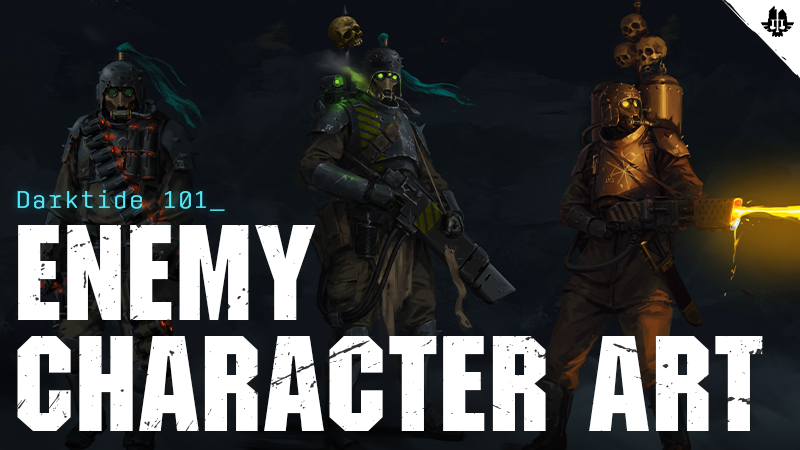
Introduction
Hello! My name is Juras, and I am one of the character artists who worked on enemy character art for Warhammer 40,000: Darktide. In this post, I will go through some of the major areas we had to tackle when working on the enemies of Darktide pre-release, and give you some insights into how we overcame certain challenges with a (quite) small in-house team of character and concept artists.
The Concepts
Making character art begins with having great concepts to use as reference and target. Apart from getting the feeling and visual style right, the concepts need to align with the gameplay intent of the characters. This ensures art and gameplay can provide a cohesive package for the player. We were very fortunate to have Miguel Iglesias working with us, who is not only incredibly talented, but also has a huge respect and understanding of the Warhammer 40,000 Universe. He provided us with some truly great initial mood concepts for the enemies, which our very talented in-house concept artists used as a foundation for creating more detailed production concepts.
First Enemy Faction
The first enemy faction our concept team started designing was The Scabs. At this point in production, we didn’t have any faction in the game, and were primarily using placeholder character art from Vermintide 2.
The first big step was to establish a faction that would be able to cover a lot of different enemy types, while feeling like a cohesive unit and fitted within the lore of Darktide. We had initial ideas of what kind of elites and specials we wanted to have within the faction, and the team came up with initial requirements and resource restrictions which would guide the art design of the faction.

Scab Lineup Mood Concept by Miguel Iglesias. There were of course a lot of iterations and variations from Miguel before we landed on the final mood concept for the lineup.
Once we had the mood concepts established, the concept art team provided us with more detailed production concepts that broke down the required assets the Character Art teams and our outsource partners would have to produce. These production concepts had to be more detailed and provide several views from different angles (see images below).
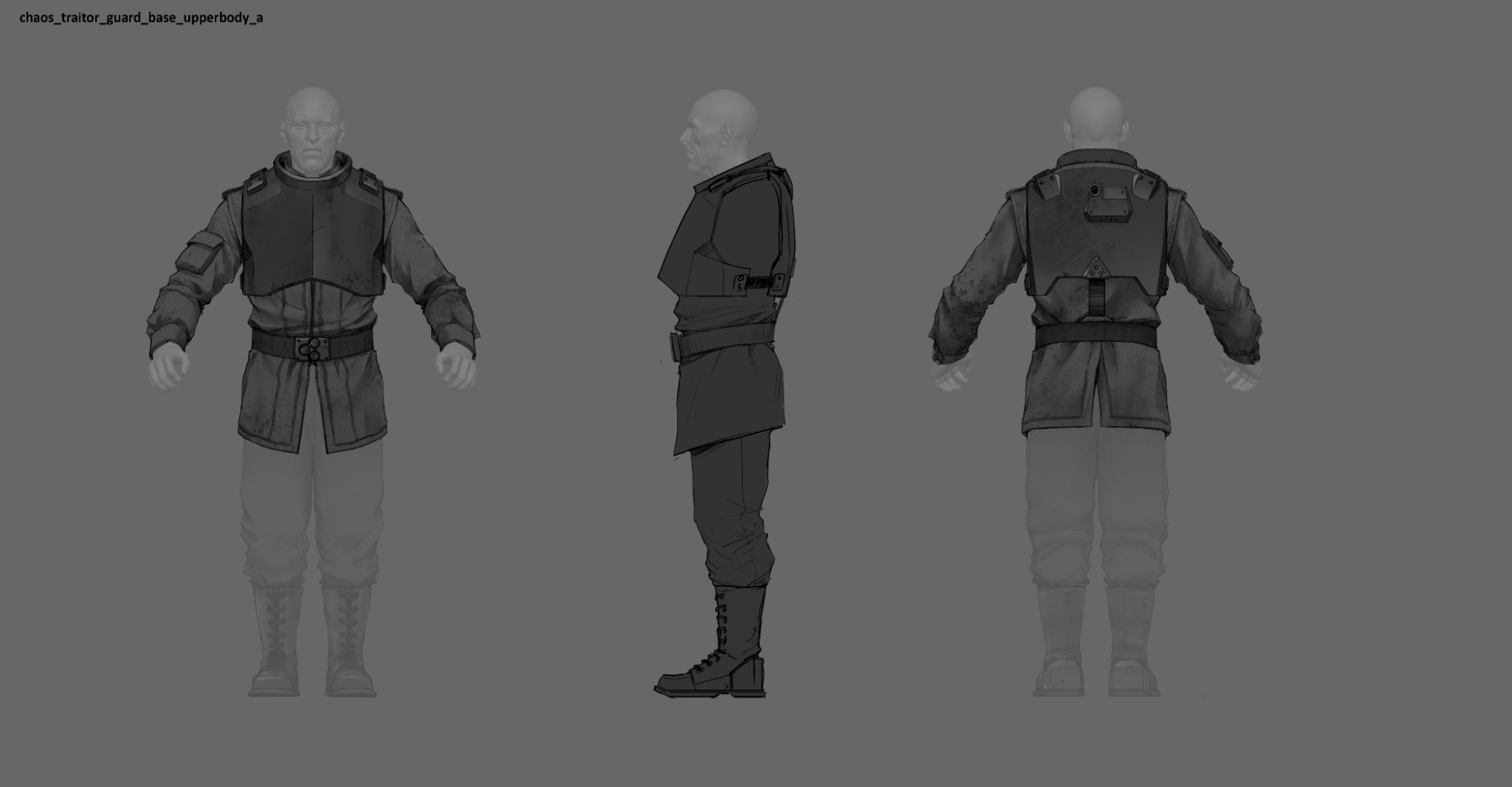
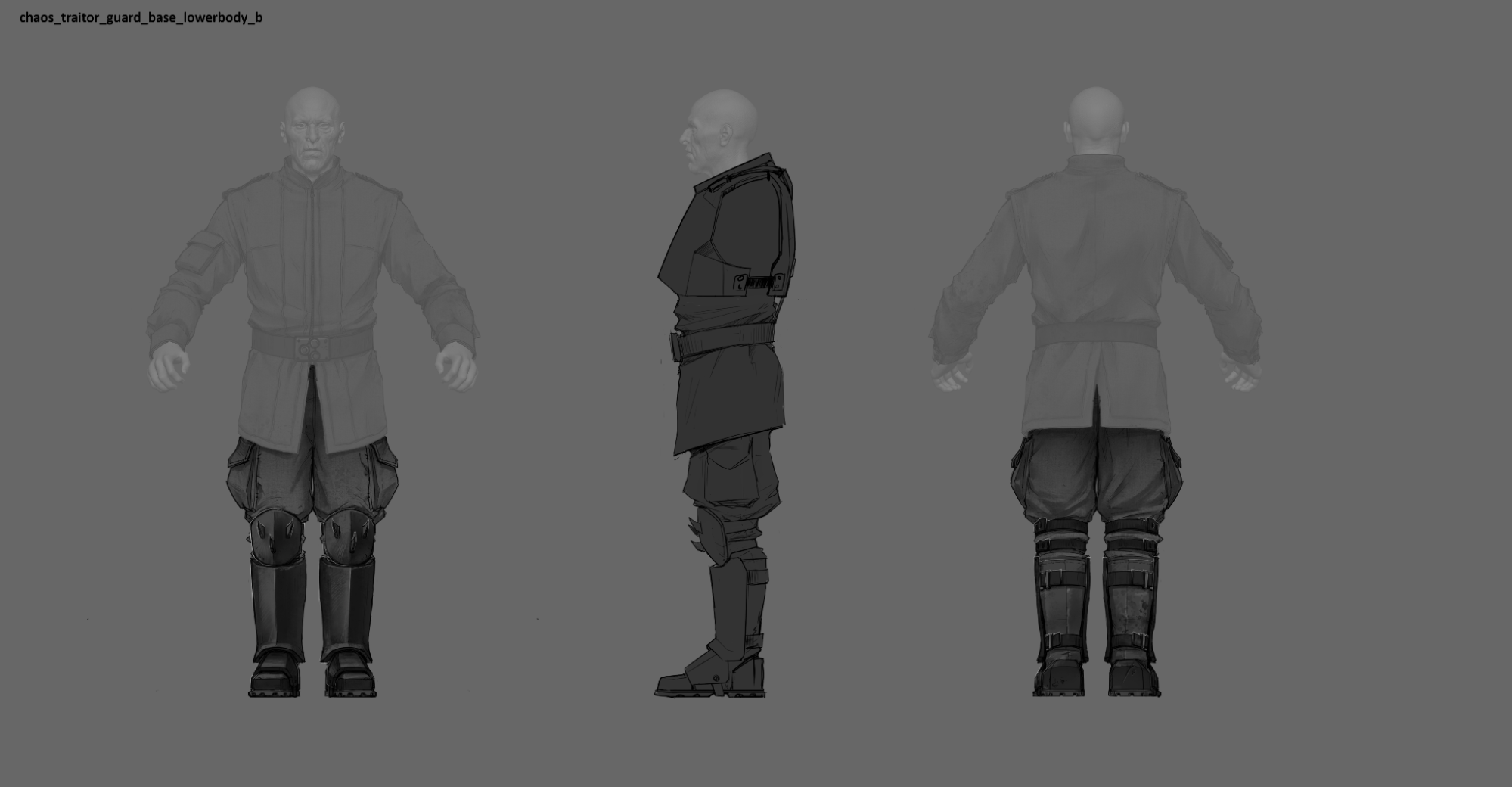
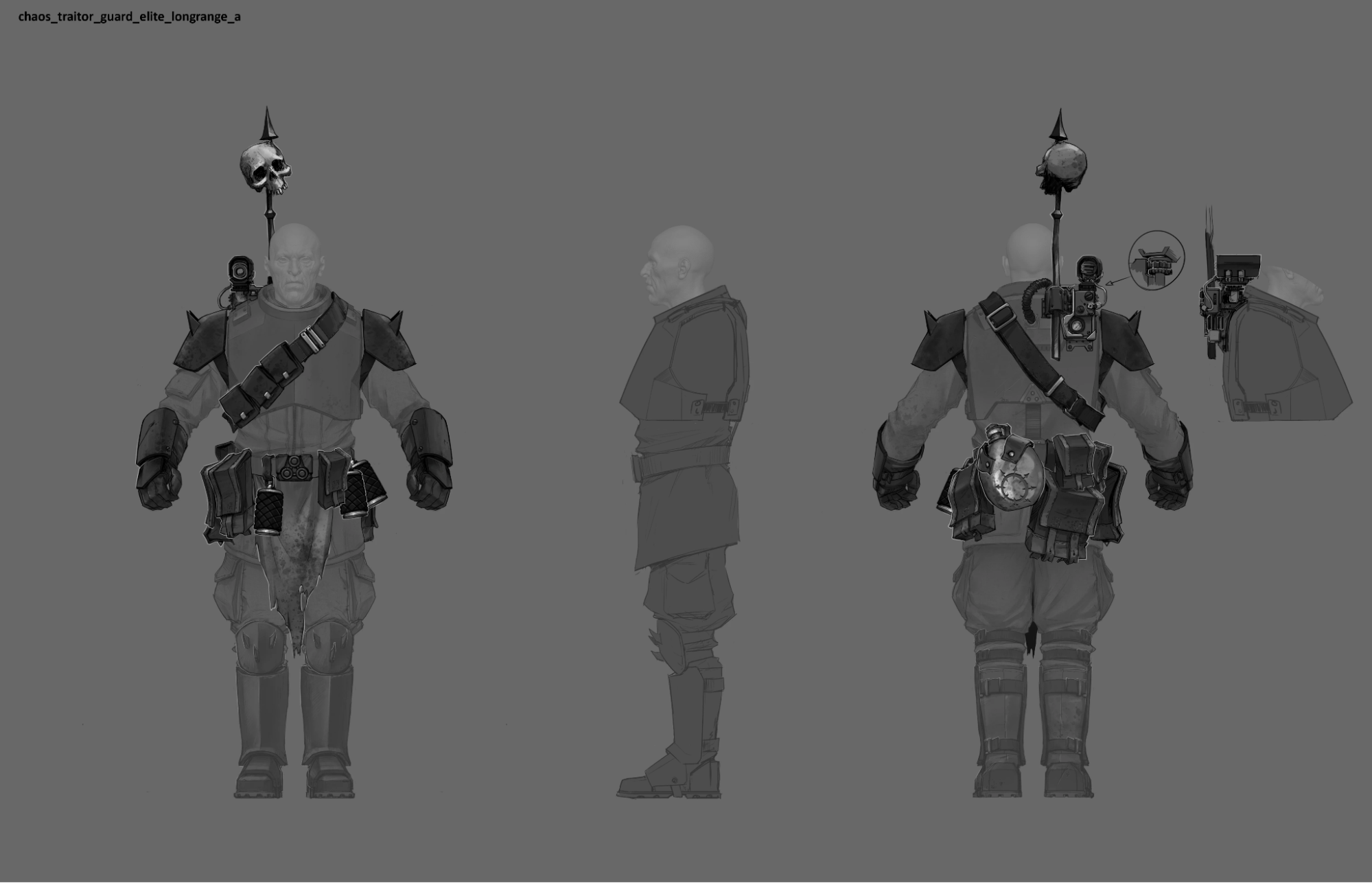
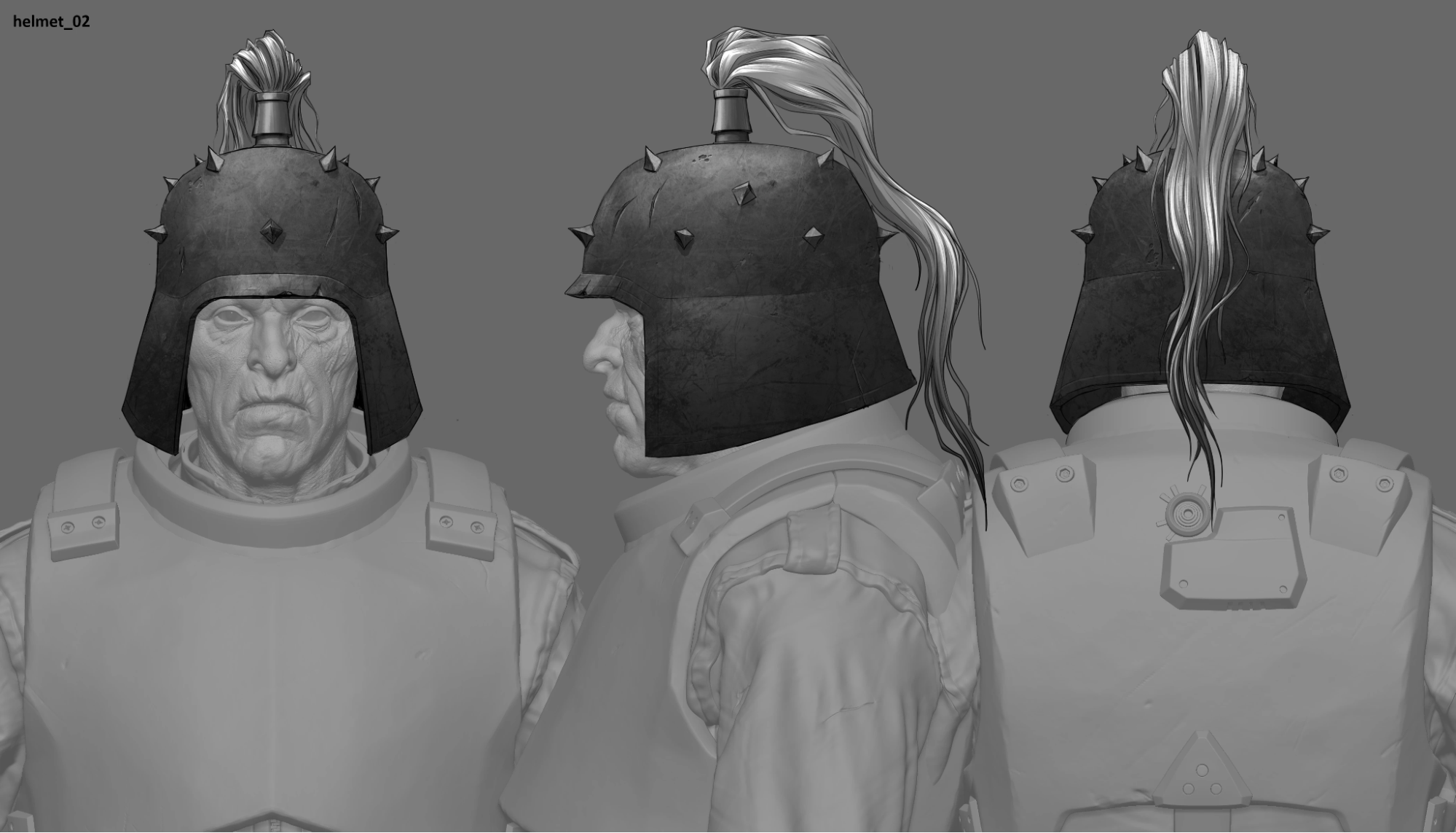
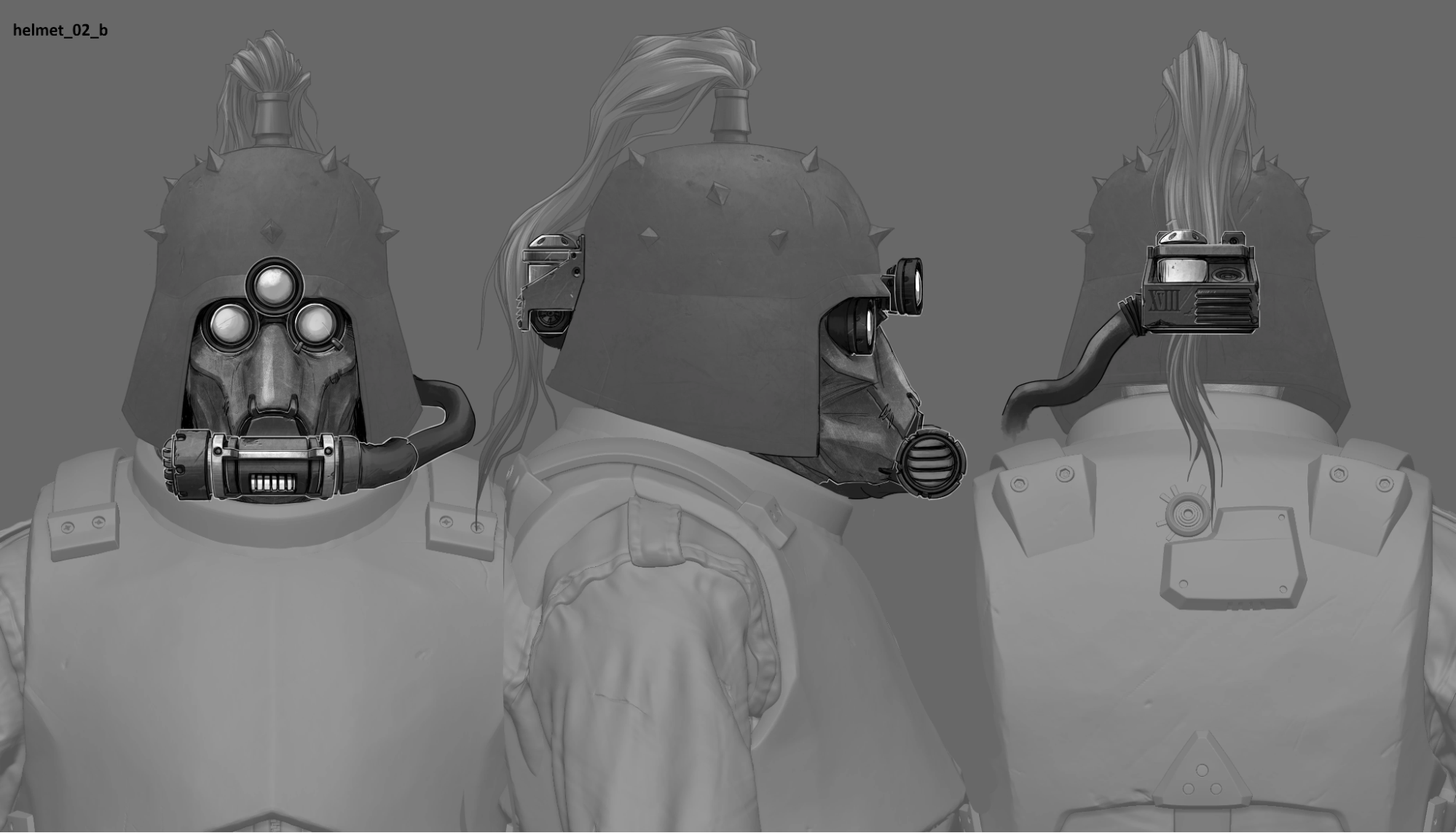
Establishing the Readability Hierarchy
In Darktide, there can be a ton of humanoid heretics that require purging on your periphery at once. On top of that, they have different readability requirements, as well. You have your run of the mill horde enemies like Poxwalkers and Groaners, stronger roamer enemies like the Scab Bruisers and Scab Shooters, then the Elites like the Scab Maulers and Ragers, specials like the Scab Trapper, and Scab Bomber. All these different types of enemies have to stand out in some way, and be able to get recognized by the player.
Early on in production, after implementing the initial enemy assets that were based on the concepts we had approved, it proved really difficult to get a sense of readability across various enemies, especially while other areas such as Animation, Sound, VO and VFX were not fully in place at the time. This made internal playtests often frustrating, as the team would struggle to recognize different enemies, which affected how efficient one was at adapting in the heat of the combat, and prioritizing/finding the right targets. Having more ranged enemy layers compared to Vermintide 2 was really the big readability challenge we had to solve.
This put more pressure on the art team to try and address the readability issues, as it was reasonably the most obvious thing that people could point to at the time. And while getting other key puzzle pieces such as VO, Sound, VFX and Animation improved readability a lot by the end of production, the character art team still wanted to push the enemy designs further towards establishing a sense of hierarchy between the different enemy type layers.
We tried switching around assets across different enemies, and testing unique color palettes per enemy, and initially this proved to not work that well, as it made the enemies feel noisy and even more unreadable. This approach basically resulted in each single enemy feeling too unique, and therefore making none of the enemies feel special anymore.
This was an important lesson, and we took a step back to see if we could take a different approach. We realized that we can’t make everyone stand out on a per enemy instance level. And had to decide on a readability priority level based on their type, intended gameplay range, and role.
Below are the main learnings we had accumulated after a lot of rounds of iteration before Darktide released:
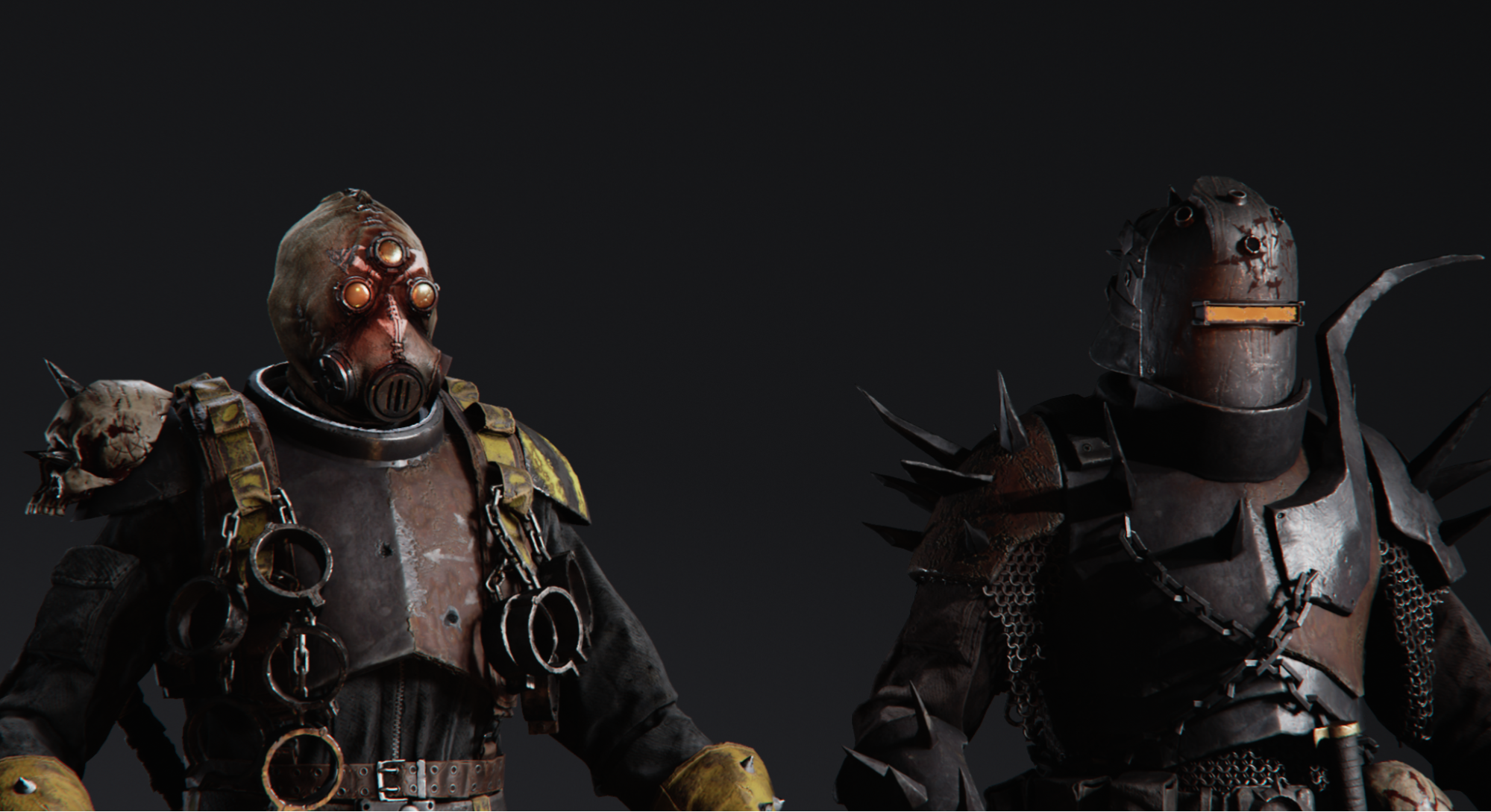 Scab Trapper’s gas mask and Scab Mauler’s welding mask were created very late in production to improve their readability.
Scab Trapper’s gas mask and Scab Mauler’s welding mask were created very late in production to improve their readability.The shoulder/head area gave the most impact in terms of perceived difference between enemies. We as humans tend to mostly focus our vision on that area of any humanoid figure.
- This allowed us to narrow our focus in making a final art pass for several elites/specials.
- The Mauler’s welding mask, and Trapper’s gas mask are some of the outcomes from that learning.
 Scab Shooter (Roamer) and Scab Gunner (Elite). Both share the same torso uniform, but the Scab Gunner has a different uniform color and additional accent colors on the armor.
Scab Shooter (Roamer) and Scab Gunner (Elite). Both share the same torso uniform, but the Scab Gunner has a different uniform color and additional accent colors on the armor.We gave the Elite enemy layer their own uniform colors, and additional color accents to their armor, and by adding red/white rusted armor paint, which was not present in the initial concepts.
- This made them stand out from the Roamer layer, and gave them a sense of having a higher rank within the regiment.
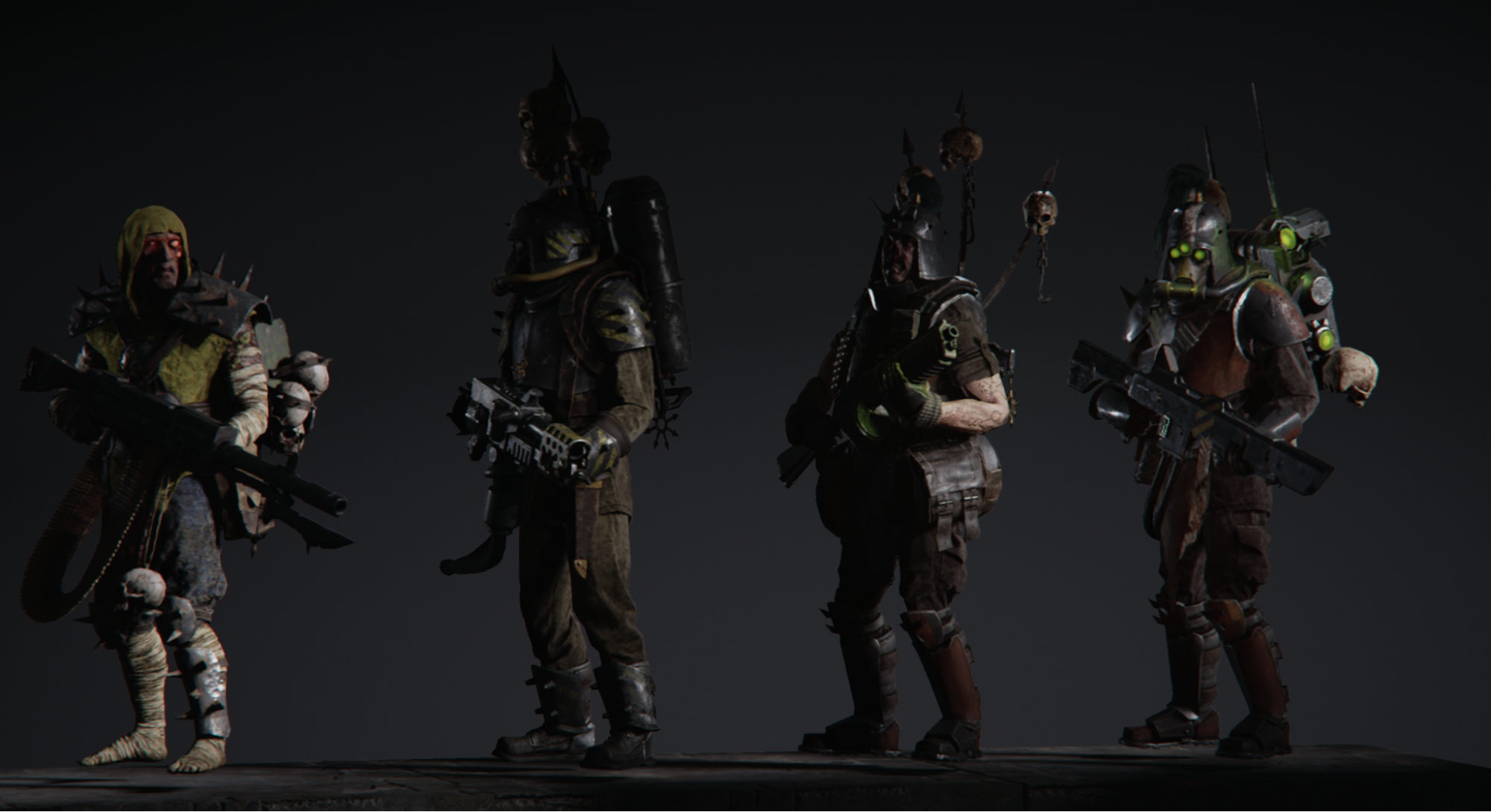 Adding back attachments for ranged elites and some specials helped them stand out more in terms of silhouette.
Adding back attachments for ranged elites and some specials helped them stand out more in terms of silhouette.Adding things to the back of the enemies helped change the overall silhouette from both the facing view, but also from the side view.
- The Scab Shotgunner, received the 3 spikes that originally were made for the Scab Mauler, as this enemy was faced on longer ranges, and needed to stand out more than the Mauler in terms of the overall silhouette, since the Scab Mauler would get up to you up and close anyway.
- We made sure that long range Elites always had some kind of back attachment.
- We used this principle for some Specials as well, if we wanted them to stand out more.
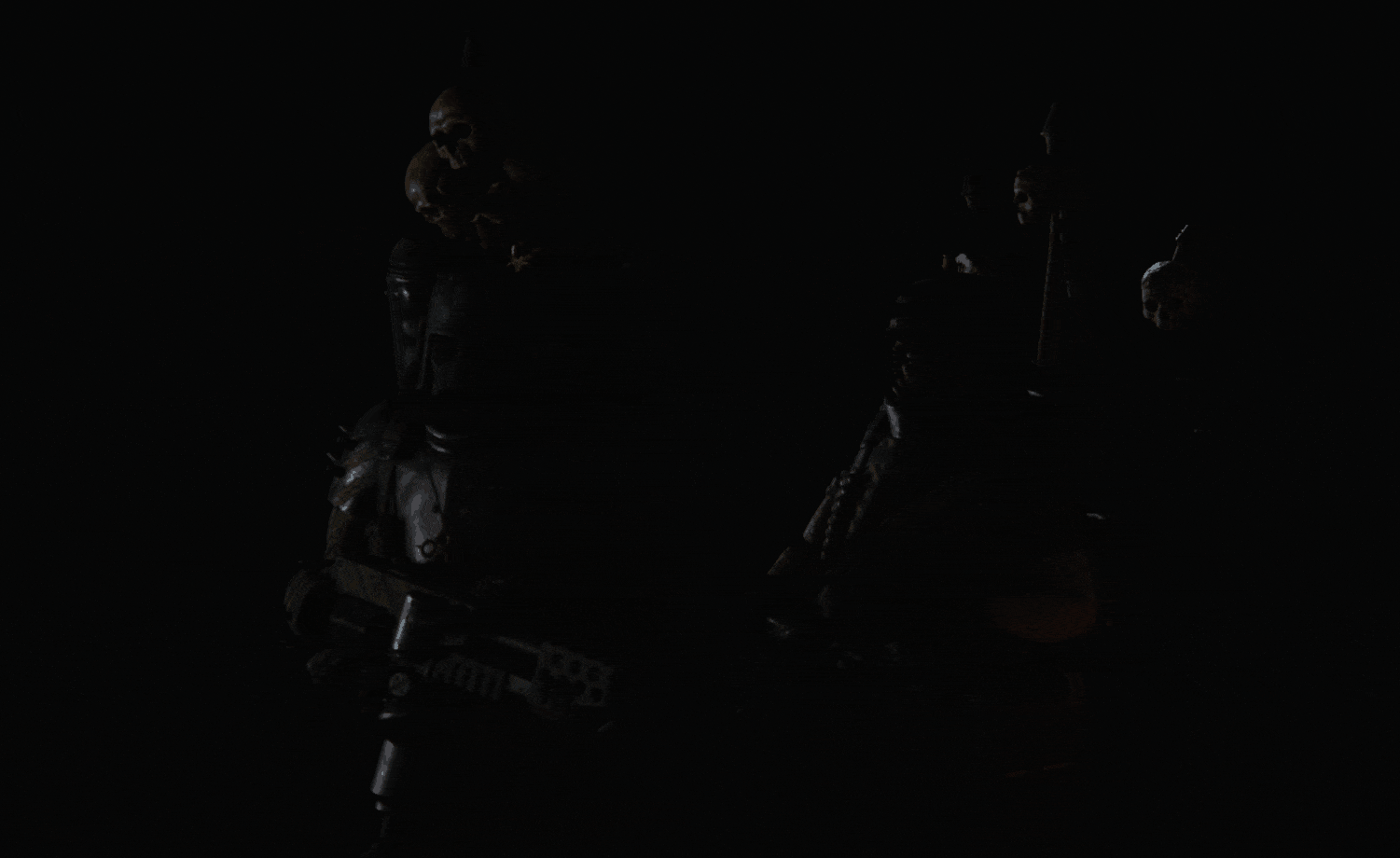 The subtle “Rim Light” effect was implemented on all enemy shaders.
The subtle “Rim Light” effect was implemented on all enemy shaders.In the end, expecting new players to be able to immediately recognize and differentiate various enemies is an impossible task when you have so many different layers of readability at once. But it’s also part of the learning experience, to as a new player get better at recognizing enemies as you play the game, as long as visual and auditory cues are there for you to pick up on and learn.
We learned that the key is treating a whole enemy type layer as a single character so that you can recognize hordes from roamers, roamers from elites, elites from specials, and specials from monstrosities, and not try and make each single enemy instance stand out.
Since we approached enemy production in a modular way by first establishing a set of “bases” (which for the Scab faction were the uniforms), and then creating additional “attachment” pieces, we were able to assemble different variations and types of enemies of the same faction in an efficient way. It also allows us to experiment more with interchangeable parts, which in the end helped establish different enemy type layers while maintaining a feeling of them belonging in the same regiment.
 Base uniforms and modular attachments for the Roamer layer of The Scabs.
Base uniforms and modular attachments for the Roamer layer of The Scabs.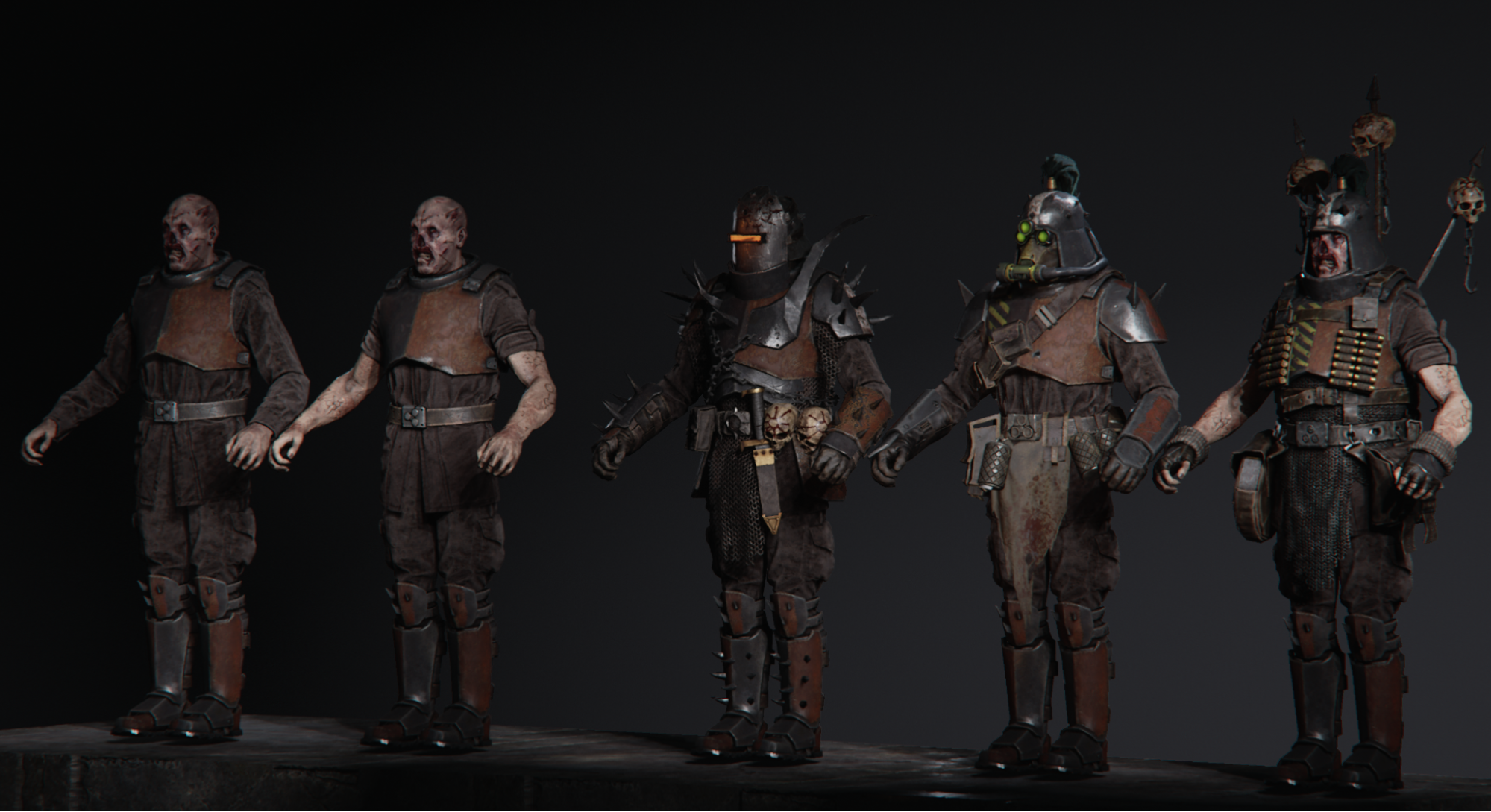 Base uniforms and modular attachments for the Elite layer of The Scabs.
Base uniforms and modular attachments for the Elite layer of The Scabs.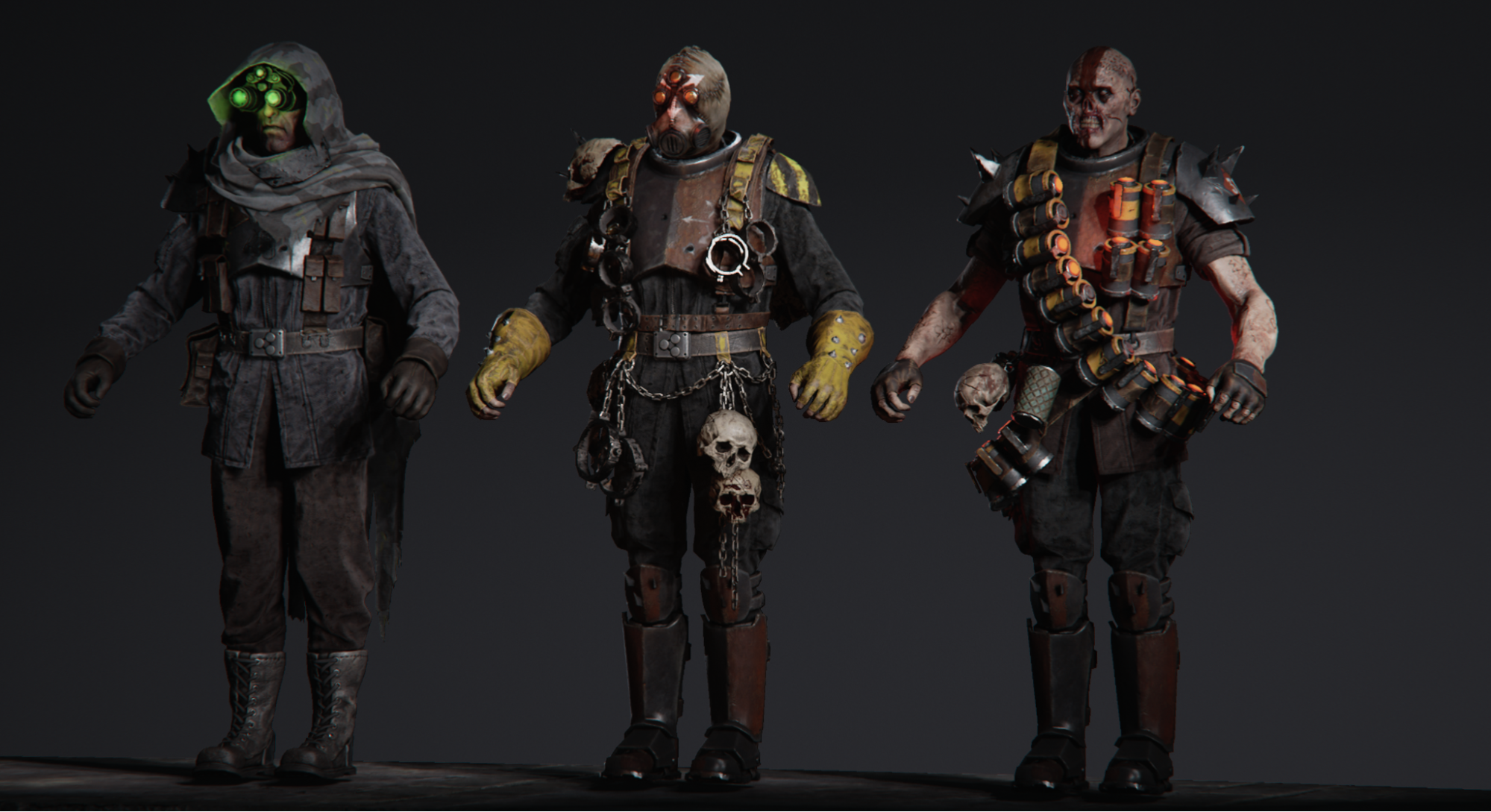 For the Special layer of The Scab faction, we ended up mixing and matching bases from both the Roamer and Elite layers, and instead pushed the attachments to stand out more. Taking this more “free” approach allowed us to make each special enemy feel unique and stand out from the rest, which worked very much in-line with their readability layer requirements.
For the Special layer of The Scab faction, we ended up mixing and matching bases from both the Roamer and Elite layers, and instead pushed the attachments to stand out more. Taking this more “free” approach allowed us to make each special enemy feel unique and stand out from the rest, which worked very much in-line with their readability layer requirements.The Admonition The art for the Admonition faction of enemies came in towards the end of production, and thanks to the learnings we had from the Scab Faction, the production process for this faction was much more straightforward. Once we had the initial concepts for the Admonition enemies, we very quickly created rough blockout assets to test their readability early on, and catch any glaring design/readability issues before we committed to producing the final quality level of assets.
This helped us make adjustments to the concepts, and informed us if we had to make any additional assets for some of the enemies within the faction.
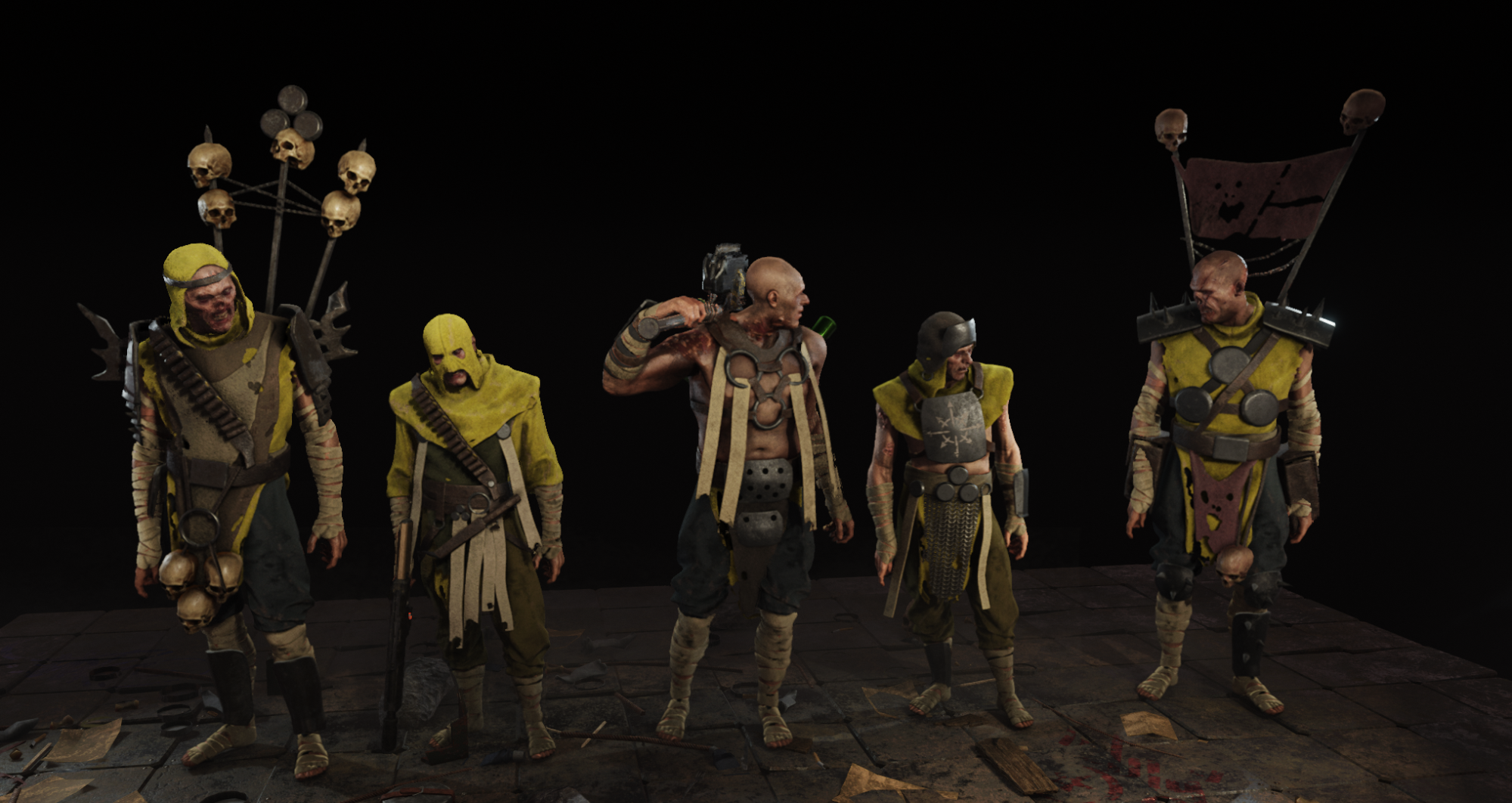 Recovered production image of the initial blockouts for Admonition enemy lineup. The goal was to block out the biggest shapes and the main silhouette and color palette.
Recovered production image of the initial blockouts for Admonition enemy lineup. The goal was to block out the biggest shapes and the main silhouette and color palette.Variations
Another challenge on top of making sure the readability layer of each enemy type is consistent, was that we also needed to make sure there’s variations within different enemy groups, so that they wouldn’t look like clones and felt like each enemy instance had its own small deviation from others. We tackled this by adding slightly different tints to the clothing, with various wear and texture variations on top, decals, and mixing in different skin tones and tattoos/markings.
We had to be careful so that the variations didn't deviate too much from the established enemy layer look, so we did it in a more subtle way. Doing this step once we had established the initial enemy type layer readability made it much easier, and doing this step too early would have made figuring out the visual restrictions for each enemy type harder.
As a last step, we also created mesh variations using a subtractive/mirror method. If an enemy had pouches and other props, we could simply remove a random amount of props for the variations, or simply mirror them.
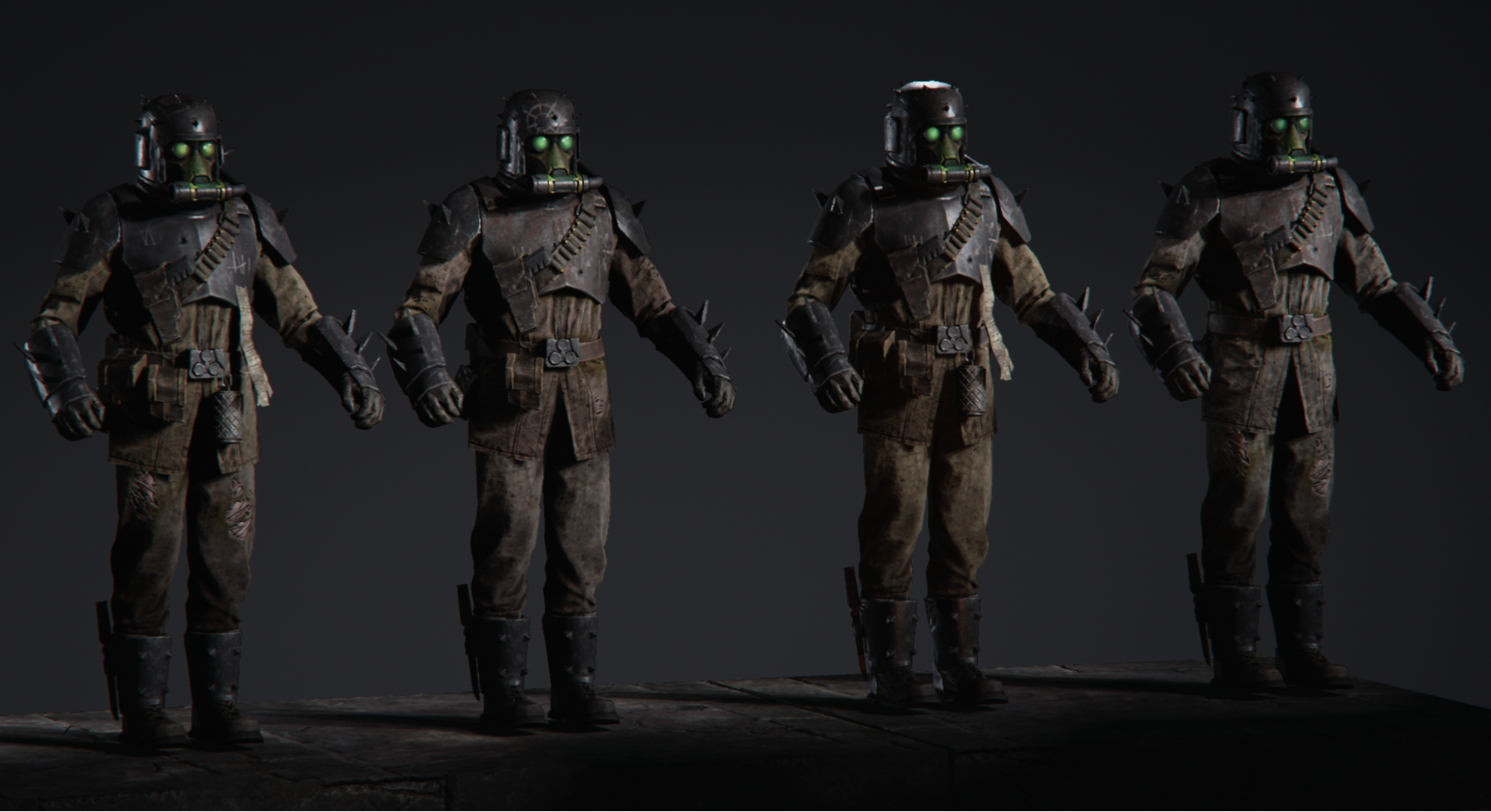 The Roamer/Horde enemy layer requires more variations as they spawn in bigger numbers.
The Roamer/Horde enemy layer requires more variations as they spawn in bigger numbers.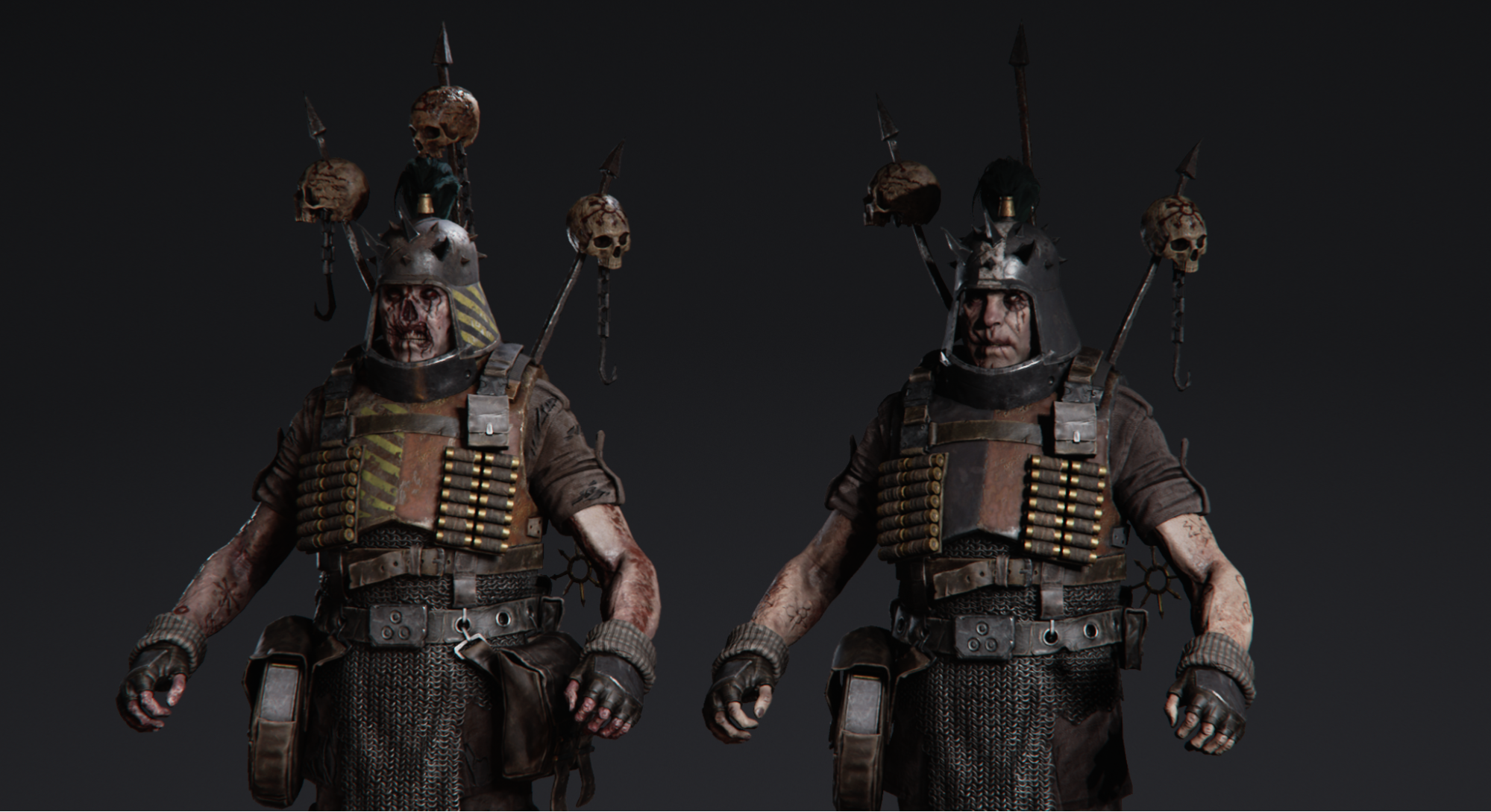 For Elite enemies, we didn’t have to create as many variations as they spawned in fewer numbers, and more apart from each other.
For Elite enemies, we didn’t have to create as many variations as they spawned in fewer numbers, and more apart from each other.Conclusion
Producing enemy character art for Darktide was a big undertaking as it is such an integral part of the second to second loop of the game, and there was a broader and larger enemy type range in the game compared to Vermintide series. Any faction or enemy started with a mood and production concept art, which had to communicate gameplay intention, nail the feel, and fit the lore of the Warhammer 40,000 Universe in a cohesive design.
We had little wiggle room for change once the concepts were established, but we were still determined to be agile and adapt to any issues we encountered even after the final assets were initially made. Once we learned that we had to treat a single enemy type layer as a single character, we were able to iterate on the details, in order to establish an intentional level of readability hierarchy between the various enemy types. The Nurgle is in the details!
Once a clear sense of readability hierarchy between enemy types was established, we could easily populate each enemy type with instance variations without deviating from the original look too much. We did this in efficient ways by using subtractive/mirror techniques on the 3D assets, texture variations, slight color hue shifts, decals, and other interchangeable texture masks.
I hope this dev log provided you some insight on the various challenges and production realities we had to face during the development of Darktide, and that you enjoyed reading through some of the details on the various approaches, learnings and techniques we had gathered by the time we shipped the game!
Now go and purge some heretics for the God Emperor, Reject!
– Juras
